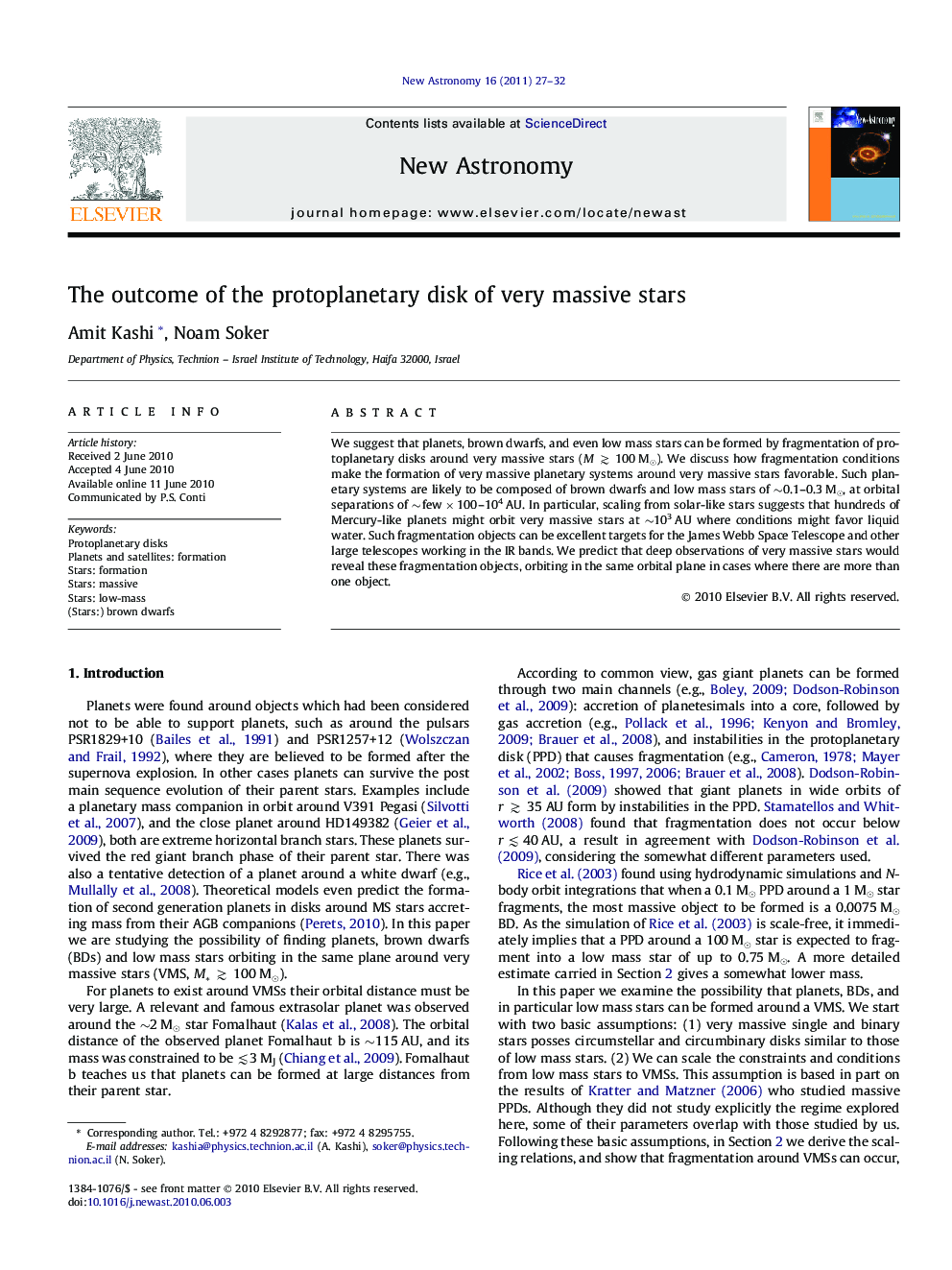| Article ID | Journal | Published Year | Pages | File Type |
|---|---|---|---|---|
| 1779567 | New Astronomy | 2011 | 6 Pages |
We suggest that planets, brown dwarfs, and even low mass stars can be formed by fragmentation of protoplanetary disks around very massive stars (M ≳ 100 M⊙). We discuss how fragmentation conditions make the formation of very massive planetary systems around very massive stars favorable. Such planetary systems are likely to be composed of brown dwarfs and low mass stars of ∼0.1–0.3 M⊙, at orbital separations of ∼ few × 100–104 AU. In particular, scaling from solar-like stars suggests that hundreds of Mercury-like planets might orbit very massive stars at ∼103 AU where conditions might favor liquid water. Such fragmentation objects can be excellent targets for the James Webb Space Telescope and other large telescopes working in the IR bands. We predict that deep observations of very massive stars would reveal these fragmentation objects, orbiting in the same orbital plane in cases where there are more than one object.
